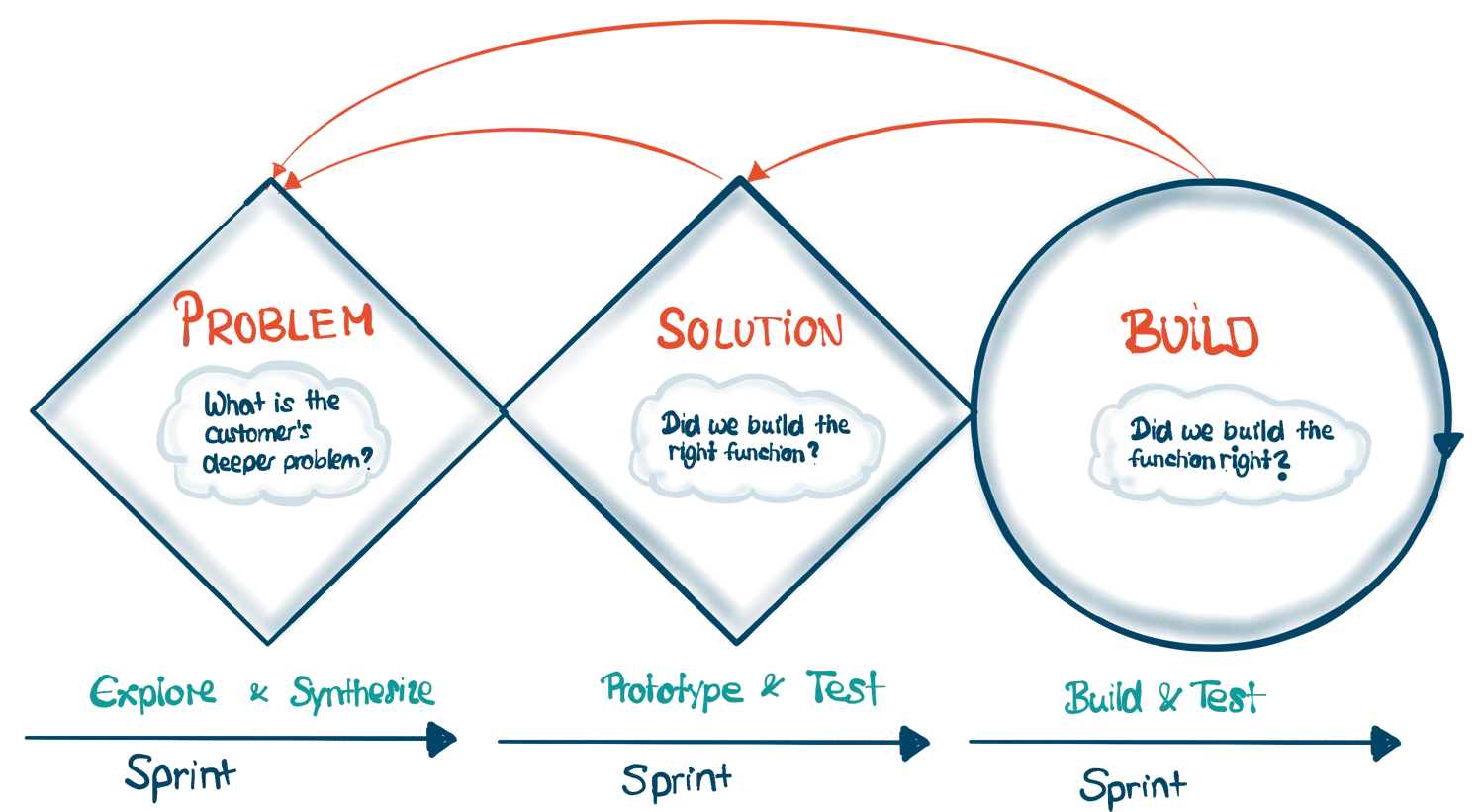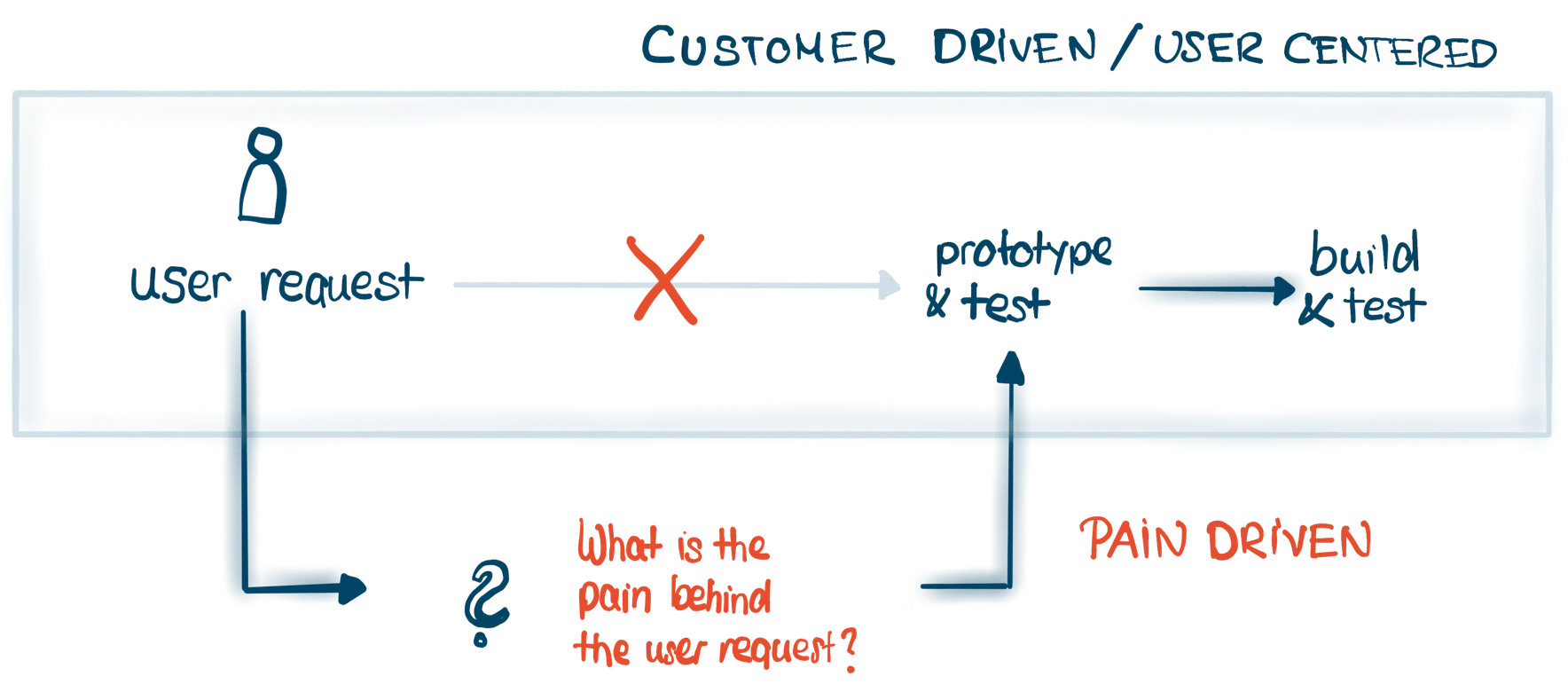Lean UX at a SaaS Startup
You Don’t Have Time To Not Do Research


Why Lean UX? Especially in startups, we are working in an environment of limited resources and the organization has to make clear decisions on what to invest them in. Nevertheless, the result of this should not be, to not invest in research! It is actually the other way around - because of limited resources you do not have the time to NOT do research! Limited resources force you to be way more precise and clear about your research, therefore, Lean UX is essential.
You don’t have time to NOT do research
— Julia Bastian
In my opinion, Lean UX is a mindset that impacts the whole company. It combines many different approaches from lean, agile to design thinking, and creates a holistic perspective on designing user experiences in rapid, iterative cycles that solve real customer problems. Furthermore, it strives to reduce waste throughout the whole process.
What influence does the context of B2B / SaaS have on UX?
In many books, UX seems simple because the examples are based on B2C products. Working at Alasco, I have experienced that designing Software for Businesses brings other conditions and therefore other challenges:
-
We are working in a field of specialized knowledge: It takes much time to just understand how our customers are working right now, since I have no specialist background in the construction industry. However, not being an expert in this field as a UX Researcher also brings many advantages, because you ask questions that are not influenced by any learned concepts in this field.
-
We have a limited number of users: Since people in a coffee shop or in the city are not our typical target group I can not just “go out of the building”. Our customers and users are experts in the field and therefore their number is limited.
-
Users and customers are not the same: The person making the decision to buy our product is not necessarily our main user. Therefore, we have to understand the motivation, needs, and pains of both.
-
Relationship to customers is key: In order to get enough and especially fast feedback from users, the relationship to the users as a UX researcher is essential. This takes time to build up and especially to keep.
-
Long onboarding cycles: Since we have long onboarding cycles, it always takes time until users are actually using new features, therefore, feedback and especially metrics are lacking behind.
5 Facts about Lean UX and our approach at Alasco
1. Lean UX is a company effort
Lean UX is not something the product team does by themself. The essential part is that you enable a process, in which the insights of all customer-facing teams are gathered. Since sales and customer success teams are in contact with our prospects and customers on a daily basis, they are the ones who have a deep understanding of their motivations, needs, and pains. We, as the product team, are in daily exchange with them, and tools like Productboard help us gather all the information at one place to cluster and categorize the topics in order to identify patterns. This aggregated information has to be aligned with the vision and strategy of the company and helps us to continuously adjust our roadmap based on new insights and learning. Furthermore, our engineers are involved in customer interviews and testing because it is essential that they build up a deep understanding and empathy for our customers as well.

2. Lean UX is iterative
During the whole product development process, we strive to reduce uncertainty. In order to do so, we do not only work in sprints for building a feature, but also for understanding the problem and creating solutions. This approach has shown to be very useful for us because it is always difficult to know when to stop doing explorative research or testing possible solutions. Therefore, we set a scope for a timeframe of two weeks (our sprint length). This scope includes research questions and hypotheses we want to validate or actually INvalidate. After each sprint, we share the information within the product team and decide on what to do: Iterate? Move on? Kill it? Furthermore, a feature for us is not finished when it is shipped, it is just ready for the next iteration.

3. Lean UX is fast & cheap
In everything we do, we strive to reduce waste. One major factor in producing waste is multitasking. Therefore, we love to work in design sprints in order to focus on just one topic for a couple of days. During those sprints, we define hypotheses, do interviews, create solutions, and test them. Another factor of producing waste is building features when there is still too much uncertainty because you might just end up with a feature that no one needs or which does not solve a pain. Therefore, prototyping and testing are an integral part of our process. Prototyping can be done in many different ways - from sketches, over excel to clickable dummies. We decide on the type of prototype based on the question we want to answer or the hypotheses we want to test.
4. Lean UX is data-driven
Lean UX is also about the right balance between qualitative and quantitative research. While qualitative research helps us to understand the “why” behind behavior, quantitative research gives us hints about where to look at and measure changes. Therefore, one of the things we measure is the frequency (how often is it used by single users?) and the adoption (how many use it?) of our features. This helps us to check if we have reached our intended goals, to identify features we need to improve or even kill features that are underperforming.

5. Lean UX is pain-driven
Many approaches focus on customer-driven or user-centered design, however, Lean UX is more than this: it is pain-driven! Since we strive to solve real customer problems, we do not want to digitize shitty processes, we want to rethink processes, simplify them and make them more agile. Digitization is just our vehicle to do so. Working pain-driven changes the way you are handling user requests. Users ask for things they are familiar with, not necessarily what would be best for them. That is why it is so important to understand the problems behind every feature request. Based on the problem we can build solutions that solve problems, in a way no one has thought of yet.

My name is Julia Bastian and I am the UX Researcher at Alasco. I am really proud to work for a company where UX and customer-centricity are not just buzzwords, but were this an essential part of our mindset. Since we are growing really fast I am excited to learn how we as a team can make our approach scalable and improve it continuously.
If you want to get deeper into this topic I can recommend reading the book “UX for Lean Startups” by Laura Klein.